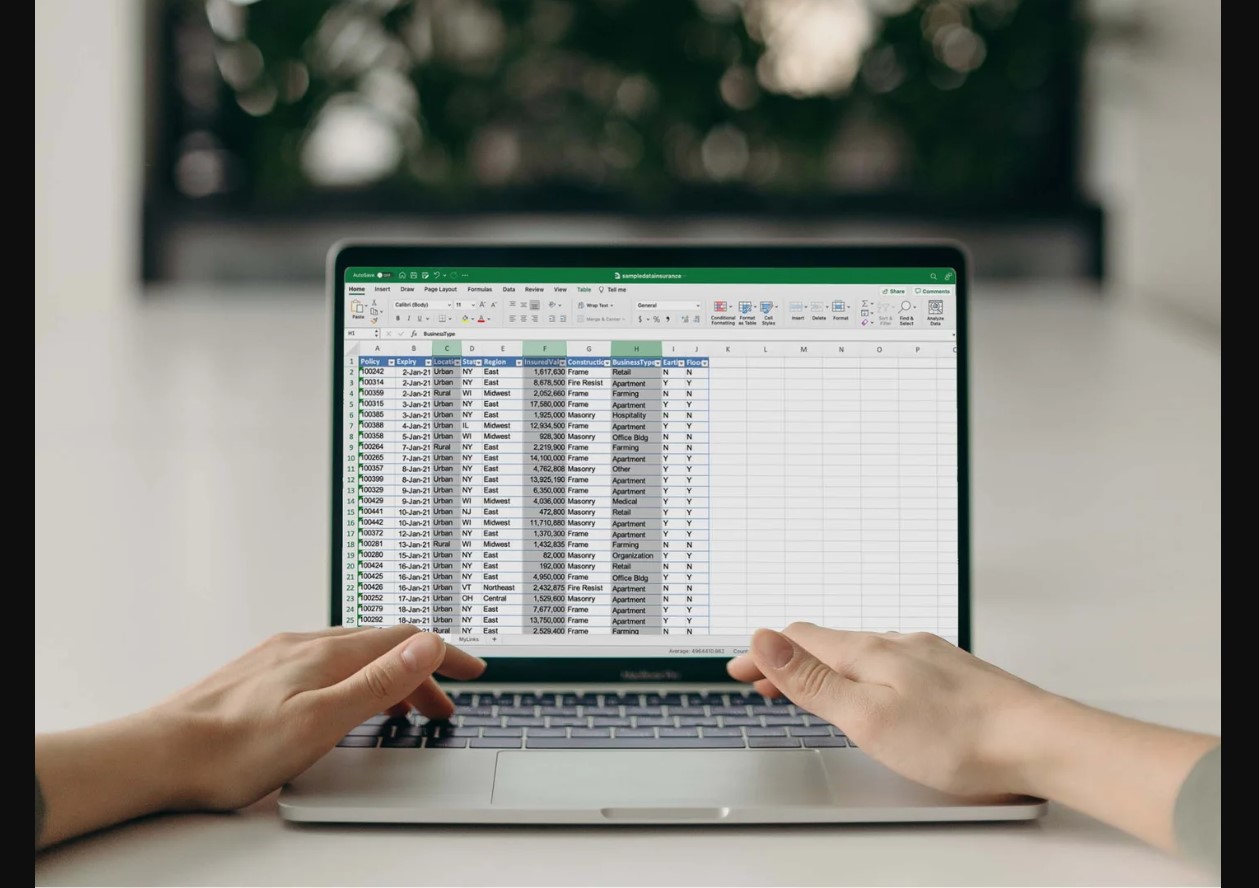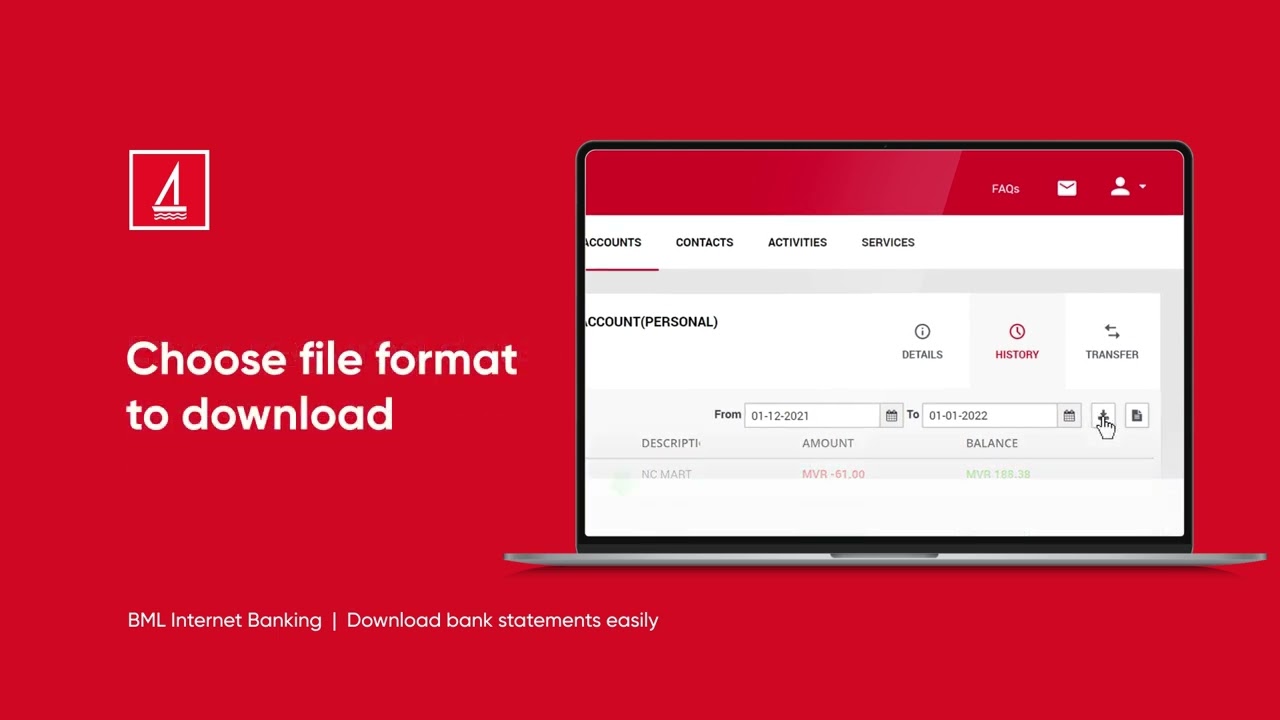Introduction
Welcome to this step-by-step guide on how to download Amex statements to Excel. If you’re an American Express cardholder looking to easily access and analyze your financial transactions, downloading your statements to Excel can be a convenient solution. By following these simple steps, you’ll be able to digitally organize and review your Amex statements in a format that is easy to navigate and manipulate.
Excel is a powerful tool that allows you to sort, filter, and analyze data efficiently. By downloading your Amex statements to Excel, you gain the ability to track expenses, create customized reports, and uncover important insights about your spending habits. Whether you’re a business owner, budget-conscious individual, or simply someone who wants a better handle on their finances, this guide will provide you with the knowledge to download and leverage your Amex statements effectively.
Before we dive into the step-by-step process, ensure that you have your Amex login credentials ready. You’ll need them to access your account and download your statements. Also, please note that this guide assumes you have a basic understanding of using a web browser and navigating websites.
Step 1: Login to your Amex account
The first step in downloading your Amex statements to Excel is to log in to your Amex account. To do this, open your preferred web browser and navigate to the American Express website. Once there, locate the login section, which is typically found at the top right corner of the page.
Click on the login button and enter your Amex username and password in the provided fields. If you haven’t registered for an online account, you’ll need to create one by clicking on the “Create New Online Account” link and following the instructions provided.
After entering your login credentials, click on the “Login” or “Sign in” button to access your Amex account. It may take a few moments for the system to verify your credentials and log you in. Once logged in, you’ll be directed to your account homepage, where you can view your account summary, recent transactions, and more.
Remember, it’s important to keep your login credentials secure and confidential. If you encounter any issues while logging in, make sure you have entered the correct username and password. If you’ve forgotten your login information, there is usually a “Forgot User ID or Password” link you can click on to recover your account access.
Once you’ve successfully logged in to your Amex account, you’re ready to proceed to the next step.
Step 2: Navigate to the Statements & Activity page
After logging in to your Amex account, the next step is to navigate to the Statements & Activity page. This is where you can access and download your Amex statements.
To find the Statements & Activity page, locate the main menu or navigation bar on your account homepage. The exact location and wording of the menu may vary, but it is typically labeled or indicated by icons such as “Account Services” or “Statements.” Click on the appropriate menu option to proceed.
Once you’re on the Statements & Activity page, you’ll see a summary of your recent transactions and account activity. It may also display additional options or filters to refine your statement view, such as selecting a specific month or card account.
Take a moment to familiarize yourself with the layout of the Statements & Activity page. You’ll likely find various tabs or sections that allow you to view different types of statements, such as monthly statements or year-to-date summaries.
To ensure a smooth transition to the next step, make sure that you have a clear view of the Statements & Activity page before proceeding further.
Once you’re ready, it’s time to move on to the next step and select the desired statement period for downloading.
Step 3: Select the desired statement period
Now that you’ve navigated to the Statements & Activity page, it’s time to select the desired statement period for downloading. Amex provides various options for statement periods, including monthly statements and year-to-date summaries.
Take a moment to review the available options and determine which statement period you want to download. Depending on your needs, you may choose to download a specific month’s statement or a broader summary of your transactions.
To select the desired statement period, look for options such as dropdown menus, tabs, or filters on the page. These features are typically located near the top or side of the page and allow you to narrow down your statement view based on the timeframe.
Click on the appropriate option to select your desired statement period. This may involve selecting a specific month from a dropdown menu, clicking on tabs labeled with different periods, or using checkboxes to make your selection.
Once you’ve made your selection, the page will refresh, and you’ll now see the statement data for the chosen period displayed on the screen. This indicates that you’ve successfully chosen the desired statement period.
It’s important to note that if you need to download statements for multiple periods, you can repeat this step after completing the next few steps.
Now that you’ve selected the statement period, it’s time to proceed to the next step and download the statements in Excel format.
Step 4: Click on the Download to Excel option
Now that you have selected the desired statement period, it’s time to download your Amex statements in Excel format. To do this, look for the “Download to Excel” option on the Statements & Activity page.
The exact location of the “Download to Excel” option may vary depending on the Amex website’s design and updates. It is usually located near the statement data, often in the form of a button or link. Look for phrases like “Download,” “Export,” or “Save” accompanied by the Excel icon.
Once you have located the “Download to Excel” option, click on it to initiate the download process. Depending on your browser settings, a pop-up window may appear, prompting you to choose the download location or asking for confirmation to proceed with the download. Follow the prompts and select the appropriate options to continue.
In some cases, instead of immediately downloading the file, the website may generate the Excel file for you. This means that after clicking on the “Download to Excel” option, you may need to wait a few moments for the file to be prepared before it starts downloading. This is typically indicated with a loading icon or progress bar.
Once the file has been successfully downloaded or generated, you will have a copy of your Amex statement in Excel format saved on your computer.
It is essential to note that the file name and location where the Excel file is saved may vary depending on your browser’s default settings. Therefore, it is a good practice to remember the download location or rename the file for easier access in the future.
With the Amex statement downloaded as an Excel file, you are ready to proceed to the next step and open the file in Excel.
Step 5: Save the downloaded file to your computer
Once you have successfully downloaded your Amex statement in Excel format, it’s essential to save the file to a location on your computer for easy access and future reference. Saving the file will ensure that you can open and work with it whenever you need to review or analyze your Amex transactions.
When the Excel file finishes downloading, a dialog box will typically appear, asking you where you want to save the file. Choose an appropriate location on your computer where you can easily find it later. You may have the option to select a specific folder or save it on your desktop.
It’s a good idea to create a dedicated folder for your Amex statements or use an existing folder where you keep financial documents. Organizing your files in this manner will help you stay organized and locate specific statements quickly.
Once you have selected the desired folder or location, click on the “Save” button or similar action to save the file. The length of time it takes to save the file will depend on the size of the Excel file and the speed of your computer.
Remember to give the file a descriptive name that will make it easy for you to identify the statement period. This could include the month and year of the statement or any other relevant information that will help you differentiate it from other files.
After saving the file, you can close the dialog box and proceed to the next step or open the file in Excel to start reviewing and analyzing your Amex statements.
Now that you have successfully saved your downloaded Amex statement in Excel format, you are ready to move on to the next step and open the file in Excel for further analysis.
Step 6: Open the downloaded file in Excel
After saving your downloaded Amex statement to your computer, the next step is to open the file in Microsoft Excel. Excel is a powerful spreadsheet software that allows you to manipulate and analyze your financial data effectively.
To open the downloaded file, locate the folder where you saved it. You can usually find the folder by navigating through your computer’s file explorer or by accessing the location you specified during the file-saving process.
Once you have located the file, double-click on it, or right-click and select “Open” to open it in Microsoft Excel. Depending on your computer and software configuration, it may take a few moments for Excel to load and open the file.
When the file opens in Excel, you’ll see the Amex statement displayed as a spreadsheet with rows and columns. Each row typically represents a transaction, while the columns contain various details such as the transaction date, description, and amount.
Take a moment to familiarize yourself with the layout and structure of the Excel file. You can use the mouse scroll or keyboard arrow keys to navigate through the rows and columns of the spreadsheet. You can also resize the columns or adjust the zoom level to better view the data.
With the Amex statement now open in Excel, you’ll be able to take advantage of the software’s powerful features to review and analyze your financial transactions. You can sort the data, apply filters to view specific transactions, perform calculations, and create customized reports based on your needs.
Now that you have successfully opened the downloaded file in Excel, you’re ready to move on to the next step and begin reviewing and analyzing your Amex statements.
Step 7: Review and analyze your Amex statements in Excel
With your Amex statement now open in Excel, you have the opportunity to thoroughly review and analyze your financial transactions. Excel offers a variety of tools and features that can help you gain valuable insights into your spending patterns, track expenses, and make informed financial decisions.
Start by taking a comprehensive look at your Amex statement. Review the transaction details, such as the date, description, and amount, to ensure accuracy and completeness. If you notice any discrepancies or unfamiliar transactions, it’s important to reach out to Amex as soon as possible.
Excel allows you to apply filters to the data, making it easier to focus on specific transactions. For example, you can filter the statement by date range, merchant name, or transaction type. This feature comes in handy if you’re looking for a particular transaction or want to analyze specific spending categories.
Furthermore, you can use Excel’s functions and formulas to perform calculations on your statement data. For instance, you can calculate the total expenses for a given time period, analyze spending patterns by category, or track your average monthly expenditures. Excel provides a range of mathematical functions, such as SUM, AVERAGE, and COUNT, that can help you perform these calculations with ease.
To enhance your analysis, consider creating visual representations of your data using Excel’s charting capabilities. By creating a bar chart, pie chart, or line graph based on your Amex statement data, you can quickly grasp trends, identify major expenses, and visually communicate your financial insights to others.
Lastly, if you want to extract specific data from your Amex statements in Excel, you can utilize Excel’s sorting and copying features. You can sort the data by a particular column, such as the amount, in ascending or descending order. Additionally, you can copy and paste selected rows or columns onto a new sheet or into another document for further analysis or reporting.
Remember, Excel is a versatile tool that allows you to customize your analysis based on your unique needs and preferences. Feel free to explore other Excel features and functionalities, experiment with different approaches, and find the analysis methods that work best for you.
By effectively reviewing and analyzing your Amex statements in Excel, you’ll gain valuable insights into your financial habits and be better equipped to make informed decisions about your spending, budgeting, and financial goals.
Conclusion
Downloading your Amex statements to Excel provides a convenient way to access, organize, and analyze your financial transactions. By following the step-by-step guide outlined in this article, you can easily navigate your Amex account, select the desired statement period, and download the statements in Excel format.
Once you have the downloaded file, you can open it in Excel to take advantage of its powerful features. Excel allows you to review and analyze your Amex statements, apply filters, perform calculations, create charts, and extract specific data for further analysis or reporting.
Remember to keep your login credentials secure, and if you encounter any issues during the process, refer to the Amex website or contact their customer support for assistance.
By leveraging Excel’s capabilities, you’ll gain valuable insights into your spending habits, track your expenses, and make informed financial decisions. Monitoring and analyzing your Amex statements in Excel can empower you to take control of your financial future.
Take the time to review your statement data, identify trends, and track your progress towards your financial goals. Whether you’re a business owner, budget-conscious individual, or simply someone aiming to gain a better understanding of your spending habits, Excel can be your trusty tool in achieving those goals.
So, what are you waiting for? Start implementing these steps today, and make the most out of your Amex statements by downloading and analyzing them in Excel. Take control of your finances and pave the way to financial success!

























